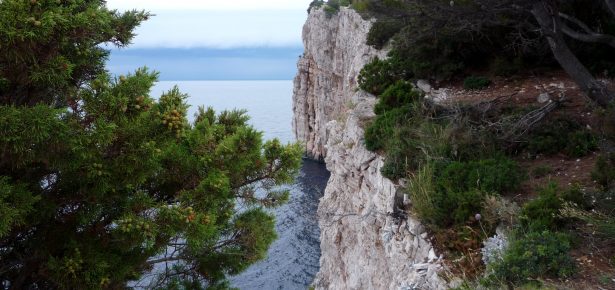
My mother’s family comes from Dugi Otok, the outermost island in the Zadar archipelago, off the Dalmatian coast of Croatia. I was often told as a child that from the island’s western cliffs you could see Italy across the Adriatic on a clear day. I was in awe of the fact that this foreign country shared the sea I was so used to and that it was so close. Later, as a teenager growing up under Yugoslav socialism and frustrated by its dreary clothing stores, I took part in annual shopping trips to Ancona or Trieste to buy a good pair of jeans. I still have a soft spot for Trieste where, back in the day, all the shopkeepers spoke good Croatian. It intrigued me to learn that language and culture could transcend major political divisions, mapping out patterns of economic exchange and the routes of human need and desire they follow.
While my personal experience of the Adriatic region in the late twentieth century is obviously very different from that of individuals and societies in the medieval period covered in the volume I edited – Byzantium, Venice and the Medieval Adriatic – certain key facts of human and physical geography and history remain consistent. The Adriatic is a long, narrow sea, connecting two very different coasts (with two very different hinterlands). It thrives on trade and exchange. It is a liminal region between the East and West, and a key channel of communication between the two. Throughout human history, only the Roman empire has managed to claim the whole Adriatic as a unified political space, and even then, when Emperor Diocletian divided the empire into two halves, the separation line went down the east-west axis of the Adriatic.
Byzantium, Venice and the Medieval Adriatic picks up the historical narrative from late antiquity. The final division of the empire in 395 saw the Adriatic assigned to the western half which fell in the fifth century. Both shores were ‘reconquered’ by the eastern Emperor Justinian I in the sixth and after the stability of his reign, the Adriatic entered a long phase of fragmentation during which local communities created their own power bubbles. By the ninth century, one such bubble was Venice. At this point it was nothing like the Venice we know (or think we know). The city state would begin to take off in the eleventh century, to start imposing itself on the Adriatic in the twelfth and to end up controlling the sea in the fifteenth.
Many chapters in the book explore this Venetian story, discussing the city’s origins, its involvement in the crusades and its relationship with Byzantium. The appeal Byzantium, the only legitimate heir to the Roman empire, held for the Adriatic communities was huge. Venice benefitted enormously from the trade privileges Byzantine emperors granted it and other cities, such as Ravenna and Ancona, owed much to good relationships with the empire as well. The volume also features case studies on two centres on the eastern Adriatic coast which has received less attention in international scholarship, due to the respective post-war political histories of Croatia and Albania. One investigates the Dalmatian city of Zadar, which interested Byzantium in the early middle ages and was a thorn in Venice’s side well into the thirteenth century. The other explores early medieval Butrint, a UNESCO World Heritage Site, which expanded and contracted from the sixth to the eleventh century in response to the economic changes that affected the Adriatic.
The entanglement between trade, administration and cultural exchange explored in this volume did not end with the fall of Byzantium in 1453. The complex and multivalent history of the Adriatic subsequently featured the Ottomans, Napoleon, the Hapsburgs, world wars and communism. As recent as the 1990s, it saw another war, that which accompanied the breakup of Yugoslavia. The ramifications of its recent history shaped my early experiences, in Zadar and Trieste. I hope that this volume inspires greater focus on the rich and complex long history of this region and helps refocus understanding of the medieval Adriatic beyond Venice, to other shores.
Latest Comments
Have your say!